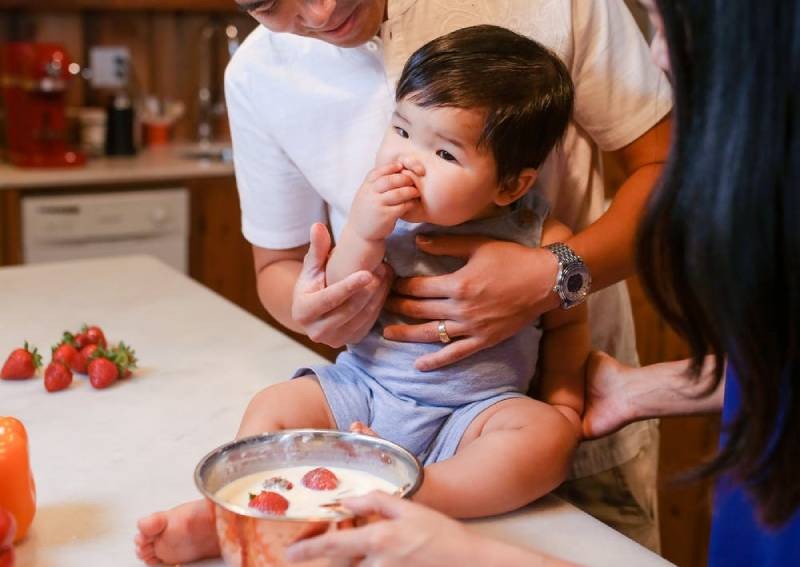Ways to get kids to try new foods from a young age

A varied, healthy diet is crucial for a child’s development, so it’s important to introduce new flavours, ingredients and textures from as early as possible. But encouraging children to try new foods can be quite a challenge.
Instead of feeding your toddler the same foods on repeat, and running the risk of them growing into a fussy eater, check out these tricks to encourage them to try different foods:
1. Focus on tasting, not eating
The more your child tastes a food, the more likely they are to accept and enjoy it. But tasting literally means just getting your little one to taste the food – not even swallowing or finishing the entire portion.
If you want positive results at the dinner table, the atmosphere needs to be relaxed and enjoyable. When you take away the pressure to chew and swallow and allow your child to spit food out (politely into a napkin), you’ll encourage them to try more foods more frequently.
Your child may be even more willing to try new things when you serve very small quantities at the beginning (as little as one or two tiny bites) and then gradually add more as they accept the food more happily.
Never force or bribe your child into eating something they don’t like as it will only cause them to be more reluctant to try new foods in the future.
2. Let them try everything
Most children become less agreeable and begin refusing new foods around the age of two.
Therefore, offer as many different foods and flavours as you can in the first two years so that they have a wider range of acceptable foods to choose from.
It’s always best to pair new foods with old favourites – seeing a favourite on the plate will make the new food feel less scary.
3. Experiment with different textures
Studies have shown that babies who were fed a variety of different textured foods (such as smooth, lumpy, and diced) seem to like a greater range of textures as toddlers, compared to babies who were mostly fed smooth baby-food purees.
Consider supplementing purees with a few large pieces of soft, well-cooked sweet potato, ripe avocado, or steamed zucchini that your baby can pick up and nibble on.
4. Offer choices
Letting your children make small food choices will give them opportunities to gain independence, while still letting them enjoy the different foods being offered.
Encourage your child to choose from several different ingredients (and include a familiar one), or a few different forms of the same ingredient for versatility and different textures.
For instance, get your baby to experience different forms of apple – slices of raw apple, a few pieces of dried apple, a few spoonfuls of canned apple etc.
5. Let them make a mess
Don’t rush to wipe your child’s face or discourage them from playing while they eat.
Children need to experience food with all of their senses, so getting messy is part of the adventurous eating journey.
Encourage them to look, touch, smell, and then nibble on the food.
Squishing and smearing their meals teaches important lessons about texture, and builds a child’s familiarity with different foods as they have fun eating, making it a relaxing pastime for them to look forward to.
6. Manage your expectations
Just because you love eating and trying new foods, don’t expect your little one to follow in your footsteps.
Taste training takes time and a lot of patience. Research shows that babies will eat more of a particular fruit or vegetable after they’ve tasted it at least eight or nine times.
Unfortunately, most of us will give up after the first failed attempt without realising that it’s too soon.
And remember that children develop at different rates, so don’t compare your child (and their eating habits) to someone else’s of the same age who might be eating a wider variety of foods.
7. Get them interested in the kitchen
Building a love for food involves more than just eating. The more little ones are involved in preparing the food, the more likely they are to enjoy eating it.
Start your little one off with picking out fruits and vegetables when doing groceries, and letting them help with small tasks in the kitchen such as mixing and measuring.
8. Be a good role model
When children see you trying (and eating) a wide range of different ingredients, they are likely to get curious and be eager to try them alongside you.
Depending on the age of your little one, have a relaxed conversation with them about the flavour and colour of the food, and ask what they think about it, and whether they would like to have it again.












Leave a Reply